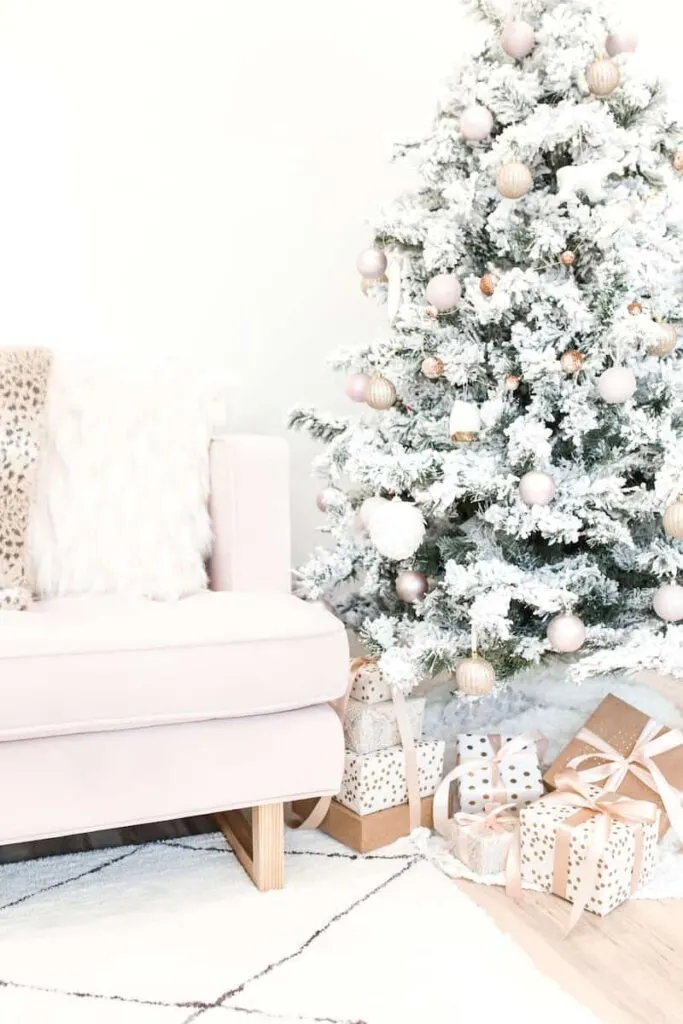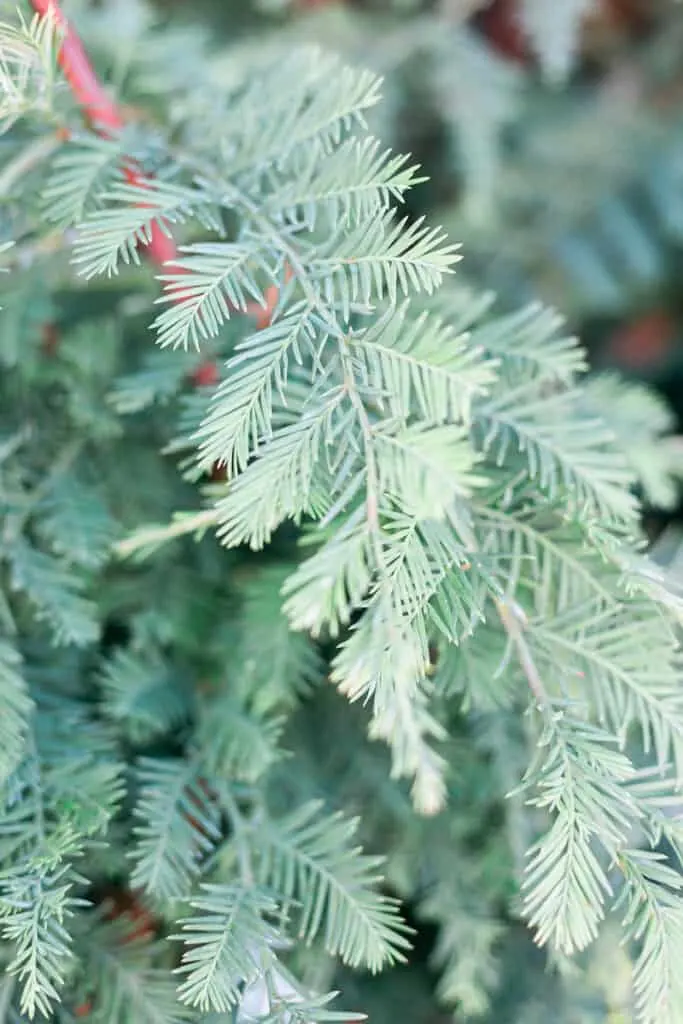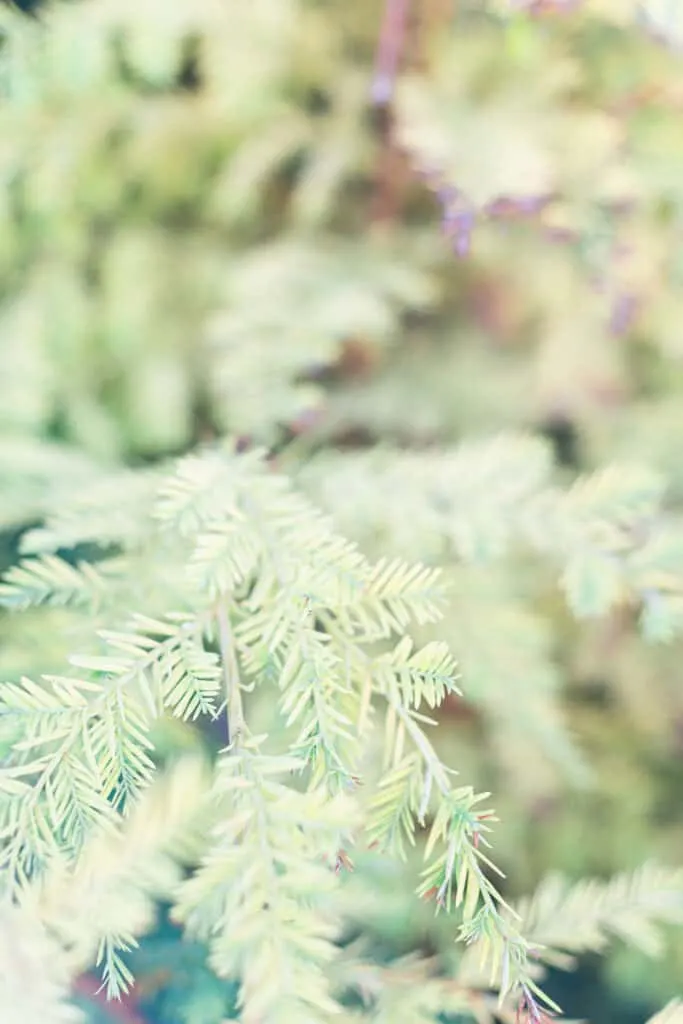Can my Christmas tree make me sick? Yes, it’s called Christmas tree syndrome and it’s real. Here’s how to avoid allergies, asthma and rashes from real or fake trees.
For a couple decades, I have noticed that I always get sick when we bring out the Christmas tree. Our family has always had an artificial Christmas tree. We have used the same one for almost 20 years.

And every single time we open the box my allergies flare up, I have brain fog, and I just get exhausted. (Weirdly, I don’t get sick from real Christmas trees, like many other people do. Which goes to show that any tree can cause you allergies.)
Every December, it seems like most people complain about being tired, run down, getting the sniffles, and feeling not-so-great.
We all blame it on the stress and fast-pace of the season, or maybe a cold going around. But could it be your Christmas tree?
Now, don’t worry. I’m not about to tell you to get rid of your tree. Because you should be happy and celebrate. So here’s what you need to know to feel better with a Christmas tree in your house.

Christmas Tree Syndrome: What is It?
This isn’t a joke. The medical community really does recognize that there are actual health problems with Christmas trees, both artificial kinds and real ones. And even the American Christmas Tree Association has recognized the health problem.
Dr. Kara Wada, with Ohio State University Wexner Medical Center, even recounted seeing articles about Christmas tree syndrome in allergy exam rooms for patients to read.
Problems can include:
- Itchy, red bumps (dermatitis)
- Rash
- Stuffy Nose
- Asthma flareups
- Coughing
- Wheezing
- Sneezing
- Aggravated allergies
The concept of a Christmas tree allergy goes back to 1970, when Dr. Derek M. Wyse shared his ideas about problems with mold and allergies in the Canadian Medical Association Journal. He found that around 7% of people with allergies saw an increase in symptoms when they added a Christmas tree to their home.
Mold on Christmas Trees: A Real Problem
In a study published in the Annals of Allergy, Asthma and Immunology, the researchers found more than 50 kinds of mold on their own Christmas trees (26 different samples were tested) that they had in their home. Two-thirds of those molds could cause hayfever-like symptoms.

An earlier study, discussed at the American College of Allergy, Asthma & Immunology in 2007, followed mold growth on one single tree in a family home. The longer the tree stayed in the house, the greater the amount of mold spores.
In the first three days of the tree being in the home, only 800 spores per square meter were detected. After two weeks, the number of mold spores detected jumped to 5,000 per square meter.
The molds in the greatest concentration found were:
- Penicillium
- Aspergillus
- Alternaria
- Cladosporium
Since mold allergy is a serious problem, you definitely don’t want the spores and fungi growing on your tree.
There are many reasons that Christmas trees have mold problems, including:
- Naturally occurring mold on the branches
- Basin of water that the tree stands in
- Hot lights
- Heating in the home
Is It a Pine Tree Allergy?
If you think your Christmas tree is making you sick, you might just blame it on pine allergies. But that might not be the problem.
The American College of Allergy, Asthma, and Immunology states that pine tree allergies are uncommon, but pine pollen allergies are common. However, the pollen is most predominant in the Spring. So assuming that you don’t have an allergic reaction for the other 11 months of the year, but you suddenly do in December, doesn’t necessarily point to a pine allergy.
Yes, pollen can and does linger on the trees. According to the American Christmas Tree Association, pollen production on trees is very low in the holiday season. Meaning that most people wouldn’t be bothered by the small amounts, except for those that are most sensitive.
Many people could be reacting to the sap and oil in pine that they wouldn’t be in contact with until they’re reaching into a tree to add lights or garland. Which can explain a pine tree allergy rash that is common.
Problems with Artificial Christmas Trees
I never had a real Christmas tree until last year. And bringing the Frasier Fir tree into our house didn’t make me feel sick.
Yet I got sick every single Christmas when we put up our artificial Christmas tree. So what is the difference?
Long ago, I put two and two together. Opening up the dusty box that had been stored in our attic all year would release lots of dust into the air and off-gassing VOCs. Along with any insect droppings that might have occurred.
Artificial Christmas trees are also made with PVC and other types of plastics. And they could also contain lead. Those materials degrade over time and even break down. Tiny bits of the chemicals can accumulate in the box or on the branches. When I opened the box, all of that stuff would be released into the air where I was inhaling it.
Add in the fact that fake Christmas trees are usually sprayed with a brominated flame retardant. And flame retardants are not only toxic, but they break down and escape from the item. So I was likely inhaling bits of flame retardants, too.
Finally, even artificial Christmas trees can develop mold if they are stored in a damp basement, humid attic, or a garage with moisture issues.
Best Type of Christmas Tree for Allergies
So what’s the answer? Rest assured, you don’t have to give up your Christmas tree this year. Follow these smart ideas to lessen (or possibly eliminate) pollen and mold problems on real Christmas trees and fake Christmas trees, too.
- When choosing a real tree, the better choices are Fir, Cypress or Spruce. This eliminates the chances of pine pollen allergies.
- Cut your own tree. That way you know it’s fresh and hasn’t been sitting around in storage becoming moldy. You can cut trees in a National Forest! I did it and it made a great memory!
- If offered, let a tree cutter or tree farm use their mechanical tree shaker to knock off dead needles, dust and pollen.
- Shake your tree to knock off pollen, mold, dust and allergens. This should only be done by someone who isn’t sensitive. And definitely wear a mask when doing this.
- A leaf blower can be used to dislodge and blow away dust and pollen.
- Hose down your tree outside and let is dry for a day or two. You can store it on a patio or in the garage or shed to allow for complete drying. Or consider a tree washing service.
- Vacuum an artificial tree gently with a hose attachment to remove allergens, dust and any insect droppings that might accumulate during storage.
- Wear long sleeves and gloves to avoid contact with the tree needles and sap.
- Reduce the indoor humidity levels of your home to prevent mold from multiplying. Ideally, you’d like humidity levels of 40% or lower. Use an inexpensive hygrometer to know what you humidity level is.
- Dust your ornaments if possible. This will reduce dust mite exposure and eliminate allergens that have built up while being stored.
- Store fake trees in a temperature-controlled area to avoid dust mites. Putting the pieces in zip-top plastic bags to prevent dust from accumulating is also a smart way to prevent allergens.
- Use an air purifier in the room with your Christmas tree to reduce allergens and mold in your indoor air.
- Keep your tree up for as short of a time as possible.